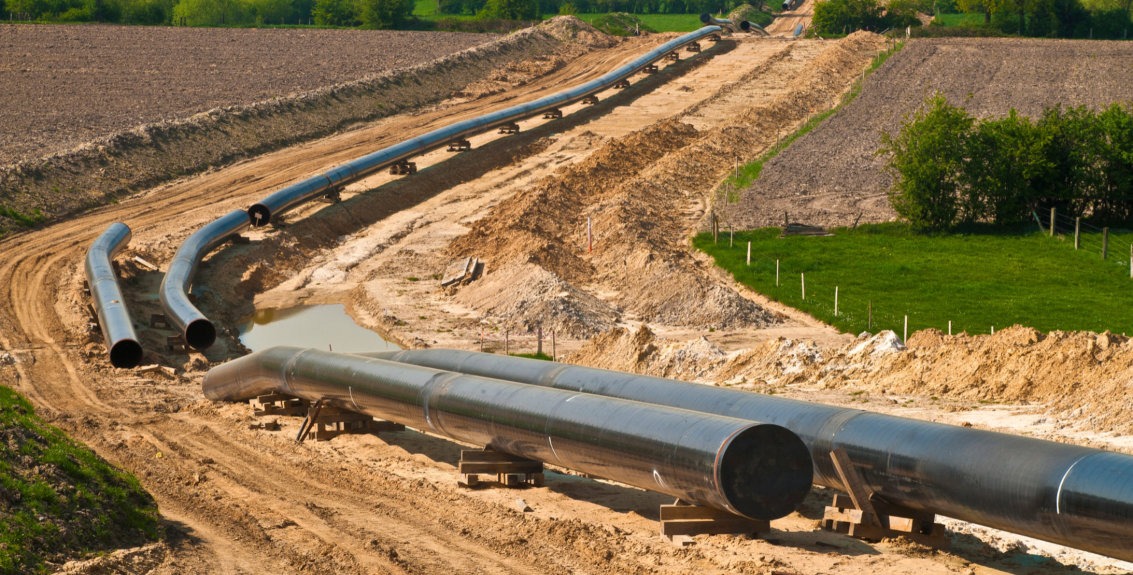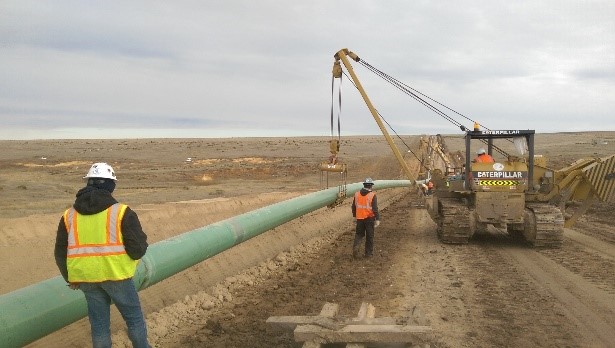Why Durable Systems Start With Proper Creek Pipe HDPE installation
Understanding the Essentials of Pipes Installation: What You Required to Understand About the Process
Appropriate pipe installation is necessary for any kind of plumbing system. It calls for cautious consideration of numerous aspects, including material choice and adherence to neighborhood policies. A tactical format can protect against issues like pressure loss, while the right devices assure efficient joining methods. Also experienced installers can make usual blunders. Comprehending these fundamentals can lead to an extra effective and resilient system, motivating a more detailed consider the crucial elements involved in the procedure.
Choosing the Right Products for Pipe Installation
When considering pipe installation, the selection of appropriate products is necessary to guaranteeing durability and performance. Various products are offered, each offering distinct benefits and factors to consider. PVC pipelines are light-weight, immune to deterioration, and affordable, making them suitable for domestic pipes. Alternatively, copper pipes, known for their longevity and capacity to withstand heats, are typically favored for heating systems.Additionally, galvanized steel pipes offer strength and resilience, suitable for sturdy applications, although they are at risk to rust over time.For below ground installations, polyethylene pipelines are preferred as a result of their adaptability and resistance to anxiety cracking. Proper material selection depends upon the details requirements of the project, consisting of pressure ratings, temperature variations, and the chemical nature of the liquids being transported - Creek Pipe trenching services. Eventually, notified choices concerning pipe materials add substantially to the general success and long life of plumbing systems
Understanding Local Building Ordinance and Regulations
Just how can recognizing local building regulations and policies effect pipe installation? Knowledge with these codes is vital for making sure that pipe installations are safe, compliant, and reliable. Regional building codes detail details demands concerning materials, installation techniques, and precaution, which must be followed in order to prevent prospective lawful concerns and costly fines.Failure to abide can bring about examinations being fallen short, hold-ups in task completion, or also mandated elimination of poorly mounted pipes. Furthermore, recognizing zoning laws and laws can affect the kind of products enabled, as well as the methods used for installation.Contractors and house owners alike ought to spend time in assessing regional regulations before starting any type of installation task. This positive strategy not only advertises safety yet also boosts the general high quality and resilience of the plumbing system, eventually promoting lasting performance and complete satisfaction.
Preparation Your Pipe Layout and Style
Proper planning of pipe format and design is essential for attaining a reliable pipes system. This process starts with examining the certain demands of the space, considering the location of fixtures and devices. Precise measurements assure that pipes are appropriately transmitted, decreasing bends and transforms that can cause press loss.Consideration of the circulation prices and the types of materials utilized is vital, as various products have varying durability and compatibility with plumbing systems. In addition, the designer must represent future developments or adjustments to the layout, enabling adaptability in situation of renovations.Efficient drainage and air flow are additionally substantial elements of the style, as they prevent clogs and guarantee proper waste removal. Partnership with local building codes ensures conformity and safety and security, which is vital in any plumbing installation task.
Important Tools and Devices for Installation
Successful pipe installation rests on having the right tools and devices handy. Vital tools consist of pipe cutters for tidy cuts, wrenches for tightening installations, and pliers for gripping and transforming pipes. Additionally, a degree assurances pipelines are mounted evenly, while a measuring tape help in accomplishing specific lengths.For details products, a welding torch might be required for copper pipelines, while a PVC cutter is crucial for plastic options. Safety and security equipment, such as handwear covers and safety glasses, secures installers from prospective dangers during the process.A pipeline bender can be especially helpful for producing smooth curves without endangering integrity, while a torque wrench guarantees that links are protected to the supplier's specifications.Having these devices easily offered not only promotes a smoother installation procedure however likewise contributes to the general longevity and performance of the pipes system. Proper tools is vital in attaining resilient results.
Strategies for Appropriate Pipe Signing Up With and Sealing
Achieving a secure and leak-free link between pipes needs careful attention to joining and sealing techniques. Various approaches exist, each suited to various pipe materials and applications (Creek Pipe trenching services). As an example, welding is often utilized for metal pipelines, guaranteeing durable connections via heat fusion. In contrast, plastic pipelines gain from solvent concrete or combination welding, developing strong, irreversible bonds.Threaded links are common in both metal and plastic piping, needing precise alignment and using suitable sealants, such as Teflon tape or pipe dope, to stop leakages. Compression installations offer one more option, where mechanical stress safeguards the pipelines with each other, making them easily disassembled for maintenance.Regardless of the method picked, correct preparation is important. This includes cleaning pipe finishes and ensuring they are devoid of debris. Implementing these strategies carefully will boost the long life and integrity of the pipe system, inevitably adding to its reliable performance
Usual Mistakes to Prevent Throughout Installation
Throughout pipe installation, avoiding typical blunders is important for ensuring a reliable and reliable system. One frequent error is failing to measure and cut pipelines precisely, which can lead to inappropriate fittings and leakages. Furthermore, overlooking to examine the compatibility of materials can lead to deterioration or various other damage in time. Incorrectly safeguarding joints and links can likewise develop weak factors in the system, triggering potential failures.Another usual error is neglecting the importance of incline and drain; pipelines must be installed at the right angle to facilitate correct circulation. Poor assistance for pipelines can bring about sagging and stress, impacting the stability of the system. Inevitably, neglecting neighborhood codes and guidelines can result in costly rework and safety and security dangers. By being aware of these risks, installers can substantially boost the sturdiness and performance of pipe systems.
Maintenance Tips for Resilient Pipe Equipments
To guarantee the longevity of pipe systems, normal examinations and cleaning are necessary techniques. These actions help identify prospective problems prior to they escalate into major issues. Furthermore, using proper insulation techniques can better secure pipelines from temperature fluctuations and ecological variables.
Routine Examinations and Cleaning
Normal examinations and cleansing are important for keeping the longevity and effectiveness of pipe systems. Frequently analyzing pipelines for indicators of corrosion, leaks, or clogs can help recognize possible issues prior to they escalate right into expensive repair work. Cleaning pipes periodically removes buildup that can limit circulation and promote damage. It is suggested to arrange inspections at the very least annually, yet more frequent checks may be required in high-usage environments. Utilizing specialist solutions for extensive cleaning warranties that all debris is efficiently gotten rid of. In addition, maintaining records of evaluations and maintenance tasks help in tracking the system's health and wellness with time - Creek Pipe reviews. By prioritizing these methods, homeowner can enhance the dependability and life expectancy of their pipe systems
Correct Insulation Methods
Reliable insulation methods play an essential function in maintaining the efficiency and durability of pipe systems. Proper insulation reduces warmth loss in hot water pipelines and protects against cold in chilly water pipelines, considerably decreasing energy prices and prospective damages. Usual products made use of for insulation consist of fiberglass, foam, and rubber, each offering varying levels of thermal resistance. It is essential to assure that insulation is applied uniformly, covering all revealed areas without voids. In check this addition, securing insulation with suitable fasteners aids preserve its setting and effectiveness over time. Normal inspections should be carried out to recognize wear and tear, assuring prompt replacements. By carrying these details out these methods, pipe systems can operate successfully and have an extensive life span, ultimately profiting both the setting and the house owner.

Frequently Asked Inquiries
Exactly how Do I Establish the Appropriate Pipe Size for My Task?
Determining the proper pipe dimension entails reviewing the project's circulation demands, pressure requirements, and the kind of fluid being carried. Consulting design criteria and conducting estimations warranties optimal efficiency and effectiveness in the installation process.
What Are the Environmental Influences of Various Pipe Products?

Can I Mount Pipes Myself or Should I Work with an Expert?
The question of whether to install pipelines separately or employ a professional frequently depends upon the person's skill level and job intricacy. An expert might guarantee compliance with laws and decrease possible long-lasting concerns.

The Length Of Time Can I Anticipate My Pipe Installation to Last?
The longevity of pipe installation varies significantly, typically lasting 20 to 100 years, depending on products, installation quality, and maintenance. Normal inspections and appropriate treatment can improve longevity and prevent early failures.

What Are the Indications of a Failing Pipe System?
Indications of a falling short pipe system consist of frequent leakages, uncommon water stress adjustments, discolored water, mold and mildew growth, and consistent moisture. Property owners ought to keep track of these signs to prevent expensive damage and warranty Related Site timely repairs are made.